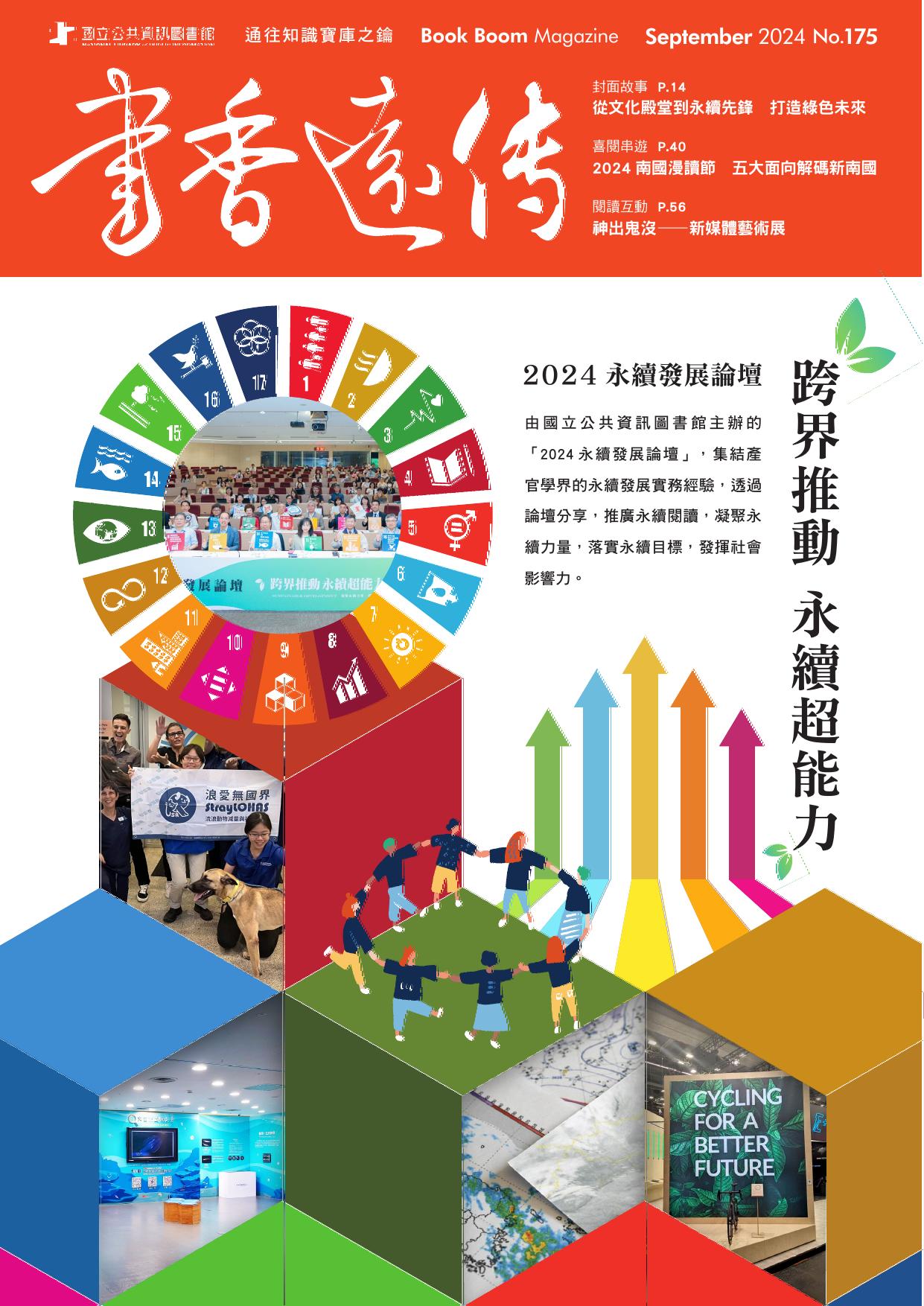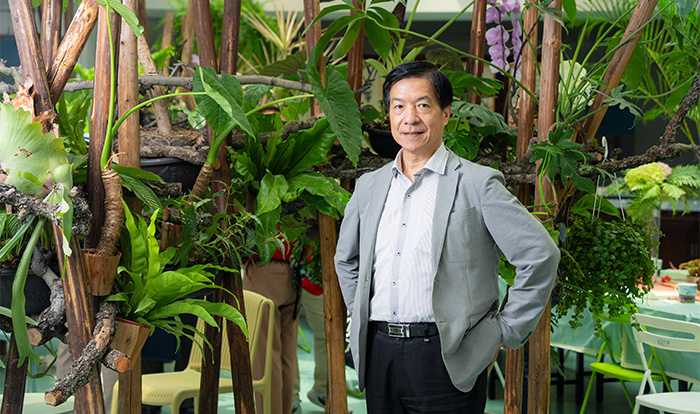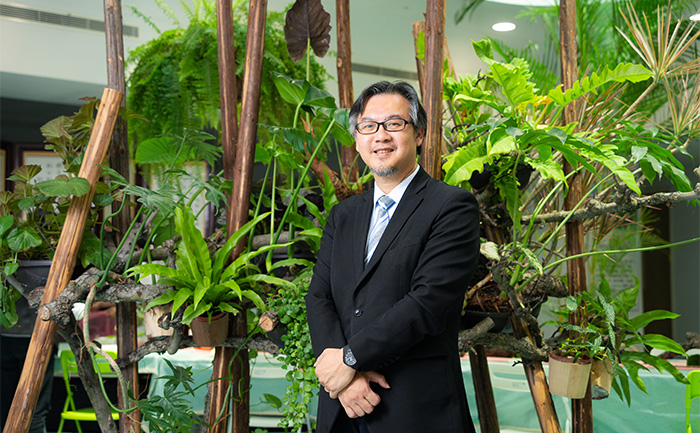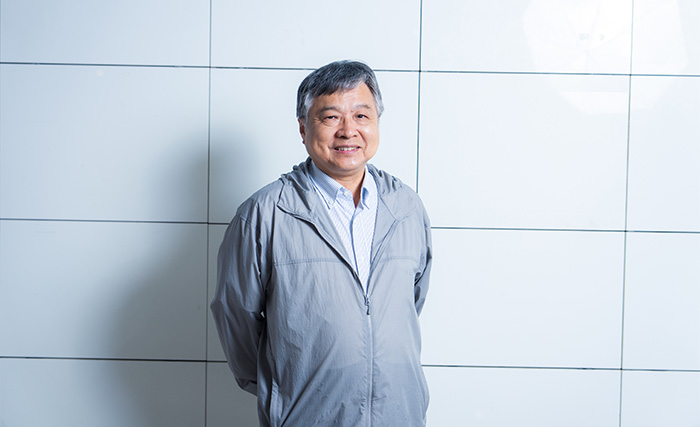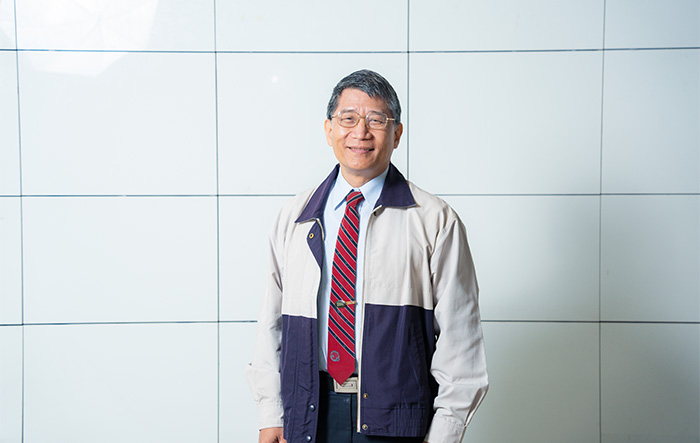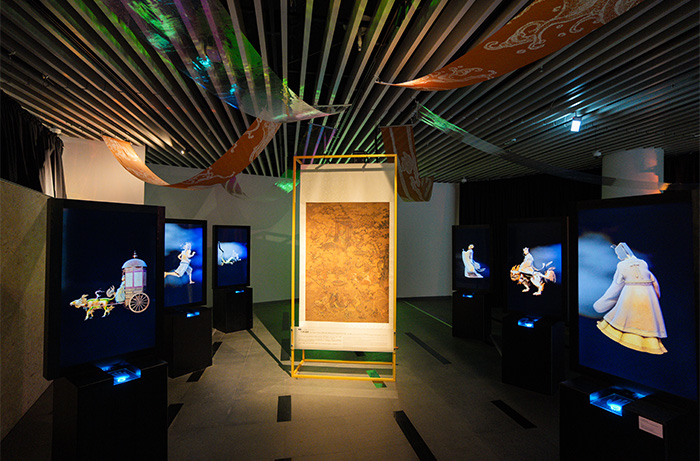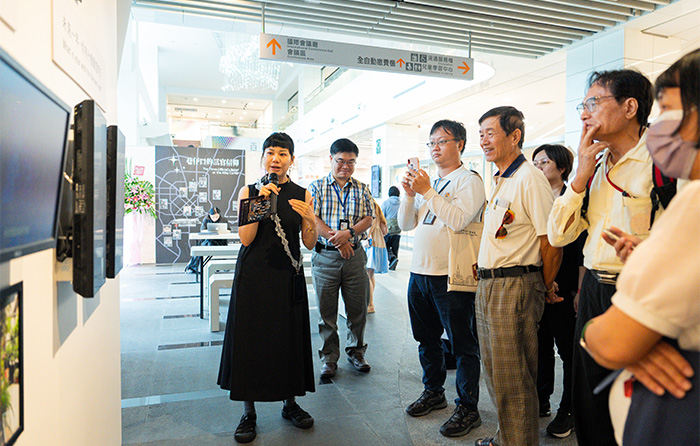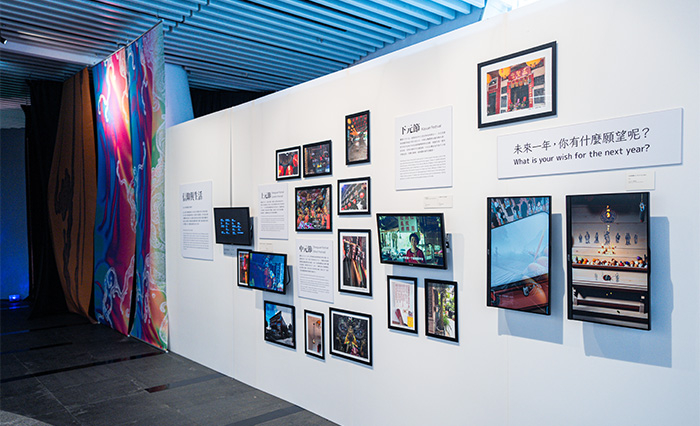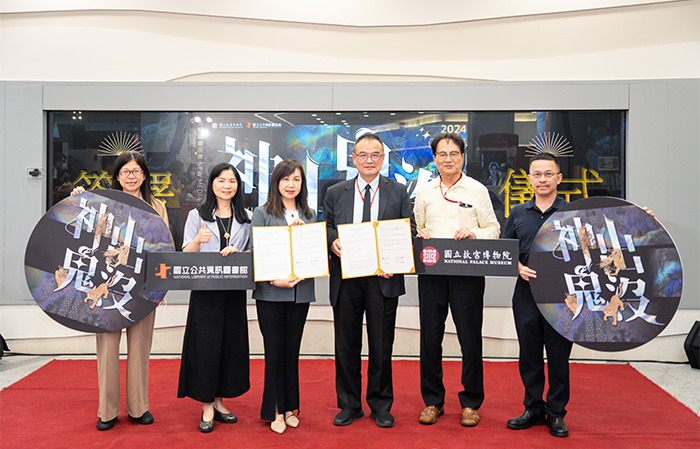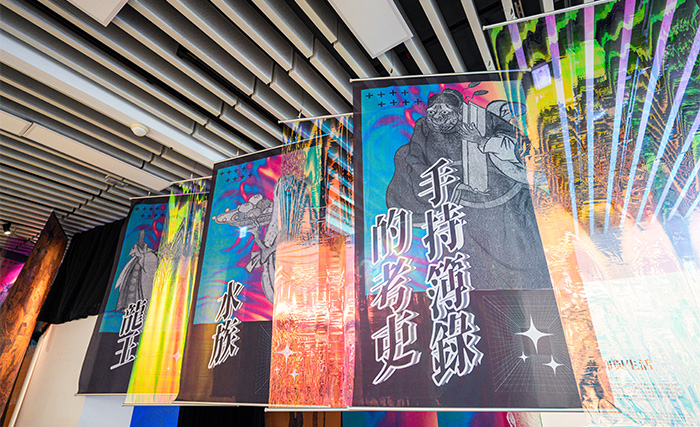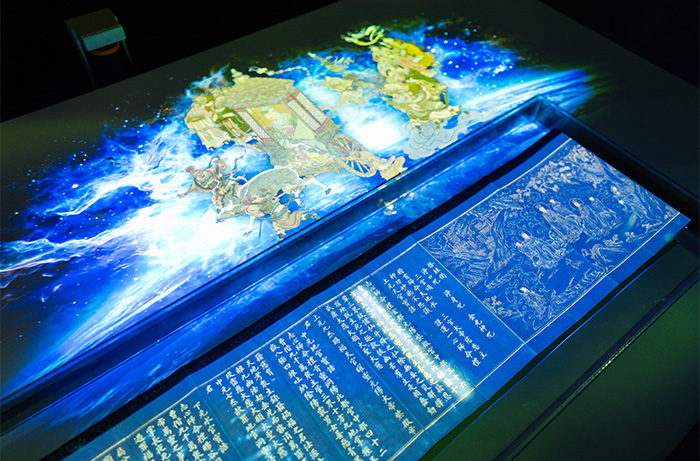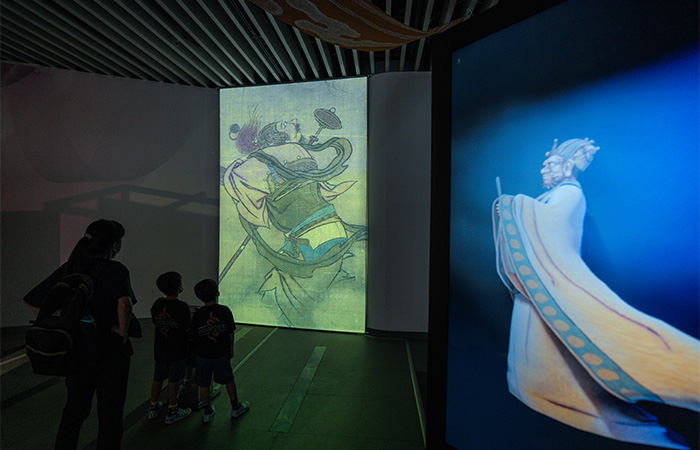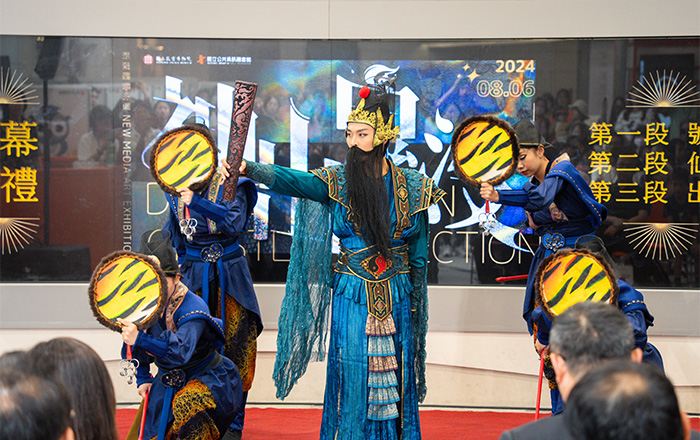Written by/Mi Chi Tsai
Photographer/Zhen Feng Zhuang
Photo by NLPI、NTMOFA、NMNS、NTT provided
Before the New Crown Epidemic, there were around 95,000 museums worldwide, hosting between 1 and 2 billion visitors annually, and these cultural and educational venues were not only temples of art and history, but also important drivers of climate action and sustainability. 2019 ICOM Kyoto General Assembly passed a resolution related to museums' sustainability, “Strengthening the Link between Museums, Communities and Sustainability”. It is important to note that the period from 2020 to 2030 will be the key “Decade of Action”.
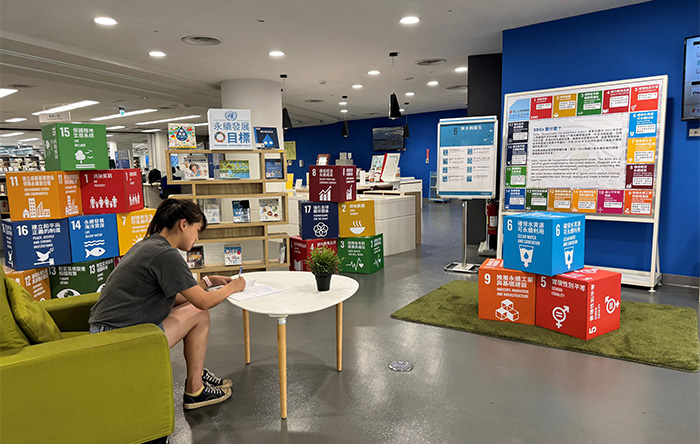
As global cultural infrastructures, cultural and educational venues play an important role in the United Nations' 17 Sustainable Development Goals (SDGs). Whether it's promoting environmental protection, social equality, or supporting educational development, they have the ability and responsibility to participate. They are not only disseminators of knowledge and culture, but also agents of social change, leading the public towards a sustainable future.
Wisdom Sustainability Knowledge Sharing
The National Library of Public Information (NLPI), the nation's first national digital public library, offers both physical and virtual reading services. “The limitations of museums to promote sustainability are similar to those of libraries.” NLPI's curator, Xiang Ping Ma, has adopted “five greens” as the goal of SDGs, and has set up a “Sustainability Promotion Group” to regularly discuss how to achieve net zero carbon emissions.
NLPI implements the sustainable energy-saving strategy of “green building” by installing solar power systems, using energy-saving lamps, and installing groundwater systems to reduce the use of water and electricity. NLPI has also set up the “SDGs Exhibition Area”, where physical book exhibitions on sustainability themes are organized on the basis of one indicator per month. The e-book exhibition will be organized with the e-book service platform “iLib Reader”, which combines online and offline resources to cultivate readers' concept of sustainability.

Knowledge exchange Inspiring sustainable thinking
The library brings together wisdom from all walks of life, and experts from different perspectives explored how to promote sustainable development in their respective fields.
In addition, the Library has created the “iLib Guider” APP to assist patrons in self-service book searching and borrowing, and “green technology” measures such as self-service book reservation and pick-up shelves and mini-libraries to minimize patrons' queuing and waiting time and enhance the efficiency of borrowing and lending. The “Good Young Library for Teenagers” utilizes IoT technology to provide intelligent multi-functional spaces and the library's first generative intelligent librarian, “Xiao Shu”, to provide accurate and responsive services and share manpower.
The UNESCO Manifesto for Public Libraries states: “In order to fulfill the purpose of public libraries as a service to the community at large, they should be made available free of charge and on an equal footing. Libraries should be accessible to all without distinction as to race, color, national origin, age, sex, religion, language, appearance or education”. By caring for diverse communities through reading, such as providing book delivery services to prisons and social welfare organizations, and focusing on the reading needs of the elderly, NLPI embodies the importance of the role of libraries in sustainable development through “green caring”.

NLPI actively cooperates with “green partners” in the industry, government and academic sectors, such as the cross-border cooperation with the famous baseball team “CTBC Brothers” to organize the “Reading Home Run”, which combines baseball and reading, and is committed to promoting the culture of reading. Xiang Ping Ma emphasized that “wisdom, sustainability, and cooperation” is the development vision of NLPI, and also the responsibility and mission as a model of the national public libraries. In the future, NLPI will continue to create a new path of sustainability through the “Five Greens” and work with all sectors of the community to promote sustainable development.
Bridging sustainability and brightening green hope
The National Museum of Natural Science (NMNS) is facing many challenges in promoting sustainability, said Chuan Jin Chiao, director of the NMNS, adding that the increase in the number of visitors to museums has led to a dilemma in terms of the environmental damage caused by the increase in the number of visitors. In addition, museums are often old buildings, and the NMNS is 38 years old, and require a lot of energy to maintain a constant temperature and humidity environment to preserve their collections.
The challenge for NMNS is to reduce carbon emissions and resource consumption while promoting sustainability. “We are conducting a carbon inventory to develop a pathway plan for net-zero emissions, which we hope to achieve by 2050”. Through green purchasing and digital curation, we will minimize the negative impact on the environment while increasing the attractiveness and educational value of our exhibitions.
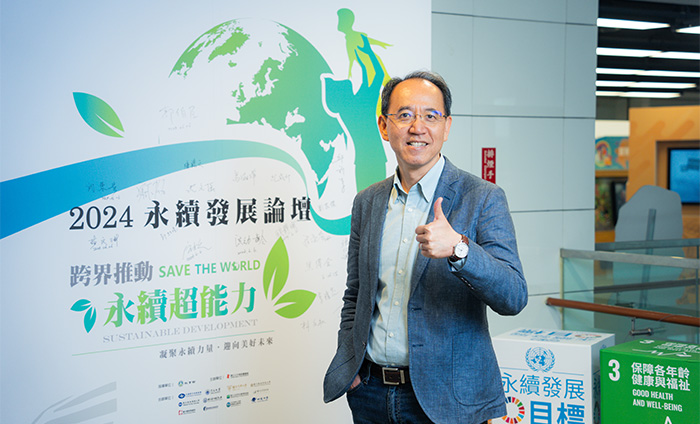
Chuan Jin Chiao details NMNS's initiatives to promote the SDGs. In terms of health and well-being, NMNS emphasizes on the physical and mental health of its staff; in terms of quality education, NMNS promotes the Digital Transformation Project, and organizes a wide range of educational promotions and seminars; in terms of clean drinking water and hygiene, NMNS provides safe water and promotes water recycling; and in terms of energy conservation, NMNS is replacing old air-conditioning equipment, and is also promoting green power procurement and energy-saving exhibition activities.
The ongoing “Climate Action - The Global Boiling Times” special exhibition at NMNS, through high-tech displays and immersive experiences, will enable the public to understand the impacts of climate change and inspire them to take part in climate action. We look forward to working on all fronts to inject sustainable energy into environmental protection.
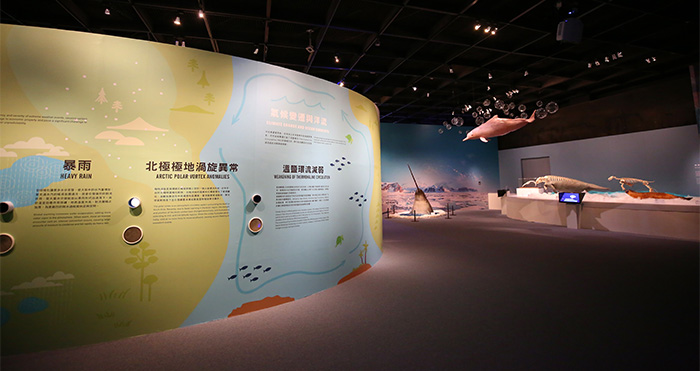
Combining technology and art to compose a green symphony
The National Taichung Theater (NTT), designed by Japanese architect Toyo Ito to serve the arts, is an open building that integrates the interior and exterior of the building with a return to nature. opened in 2016, NTT is now facing the challenge of sustainability by utilizing the power of technology, and by 2022, NTT will be introducing the ISO 50001 energy management system. Through visualization and monitoring data, NTT will carry out improvement plans accordingly.
Chi Pin Yen, Deputy Director of NTT, said, “We found that air conditioning accounted for 50% of NTT's energy usage, so we decided to start from here. NTT replaced the existing 500-refrigerated-ton (RT) fixed-frequency chilled water mainframe with two 300-refrigerated-ton (RT) variable-frequency mainframes, which can be flexibly adjusted according to the demand, and has successfully reduced energy consumption. In addition, NTT will complete the “ISO14064-1 Greenhouse Gas Emission Verification” in 2023 and publish the “NTT Carbon Inventory Practice” at COP28.
In addition to hardware equipment, NTT also actively promotes green theater. For example, NTT has introduced a carbon reduction model for the production of Jungle Book Reimagined by the British Akram Khan Dance Company. For example, NTT has introduced the Jungle Book Reimagined by the British Akram Khan Dance Company, and the 2023 New Art Project's “Can You Like Me Before I Fade Away? In collaboration with the Doctor of Philosophy at National Chung Hsing University, the company has designed an “electric floor” installation, which responds to the international trend of sustainable theater with a zero-carbon emission, body-generated electricity participatory performance.
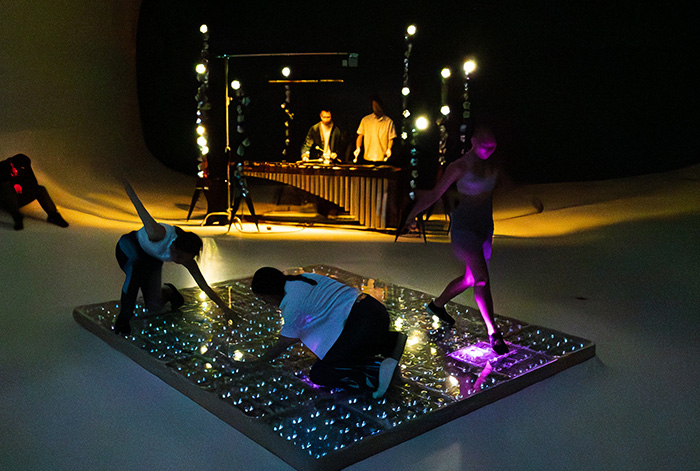
Regarding sustainability, everyone can be a champion of action: NTT2023 has set up a Sustainability Team, which is a cross-departmental organization that contributes creative ideas and action plans, “Make a wish, and we will find a way to fulfill it together. Chi Pin Yen expects everyone to utilize their ingenuity in sustainability actions to build a green future.
Combining technology and art to compose a green symphony
The National Taiwan Museum of Fine Arts (NTMOFA), the nation's largest public art museum, has extensive exhibition space and storage, and currently houses more than 20,000 works of art. Preservation of these works of art requires a constant temperature and humidity environment, which results in significant costs for exhibitions, setup, and transportation each year.
Chia Cheng Wang, Deputy Director of NTMOFA, explained that in terms of digital application, NTMOFA has introduced RFID system to manage the collection and utilized low power consumption IoT environment monitoring system. NTMOFA has switched to QR Code scanning for visitors to facilitate crowd control, and the attached library promotes e-resources by opening up remote access to enhance the efficiency of resource utilization.
NTMOFA also incorporates the concept of environmental sustainability into its exhibitions and programs, such as the sustainable setup used for the Children's Day program, which was carried over to the 36th anniversary celebration. “We also have a collection of environmentally relevant artworks, through which we communicate our concern for the environment.” In order to be environmentally friendly, we will gradually increase the recycling and reuse rate of wood in the exhibition halls, and utilize a digital system to monitor the temperature and humidity in the exhibition halls to save energy. NTMOFA also plans to install solar panels on the roofs of the exhibition halls, which will generate more than 200 kilowatts of electricity annually. Collection packaging and transportation materials will be partially recycled and environmentally friendly to reduce the carbon footprint.
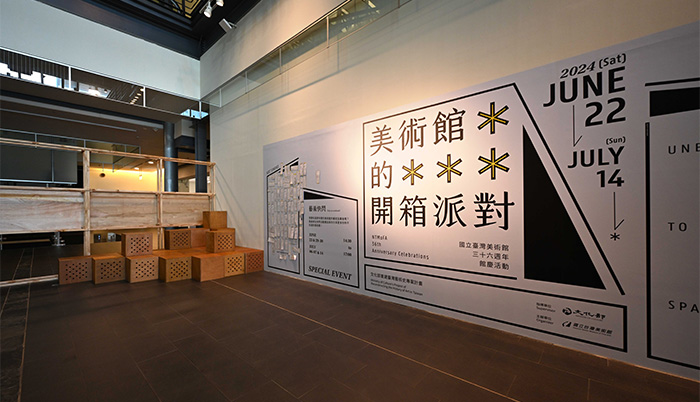
NTMOFA's current exhibition “Sea” at the exhibition space “U-108” uses immersive experiences to reflect on the issue of ocean pollution and to arouse the public's reflection on environmental protection. Although there are still many challenges to environmental sustainability, NTMOFA will continue its efforts to show its determination to coexist in a friendly manner with the earth.
Cultural and educational venues are indispensable partners in the promotion of sustainable development. From NMNS's Carbon Emission Reduction Program to NLPI's Five Greens, to NTT's Intelligent Energy Saving and NTMOFA's Eco-Art, the venues have demonstrated the profound connection between culture and environmental protection through their practical actions, and have led the trend of sustainable development to create a sustainable and beautiful green world for the public.


